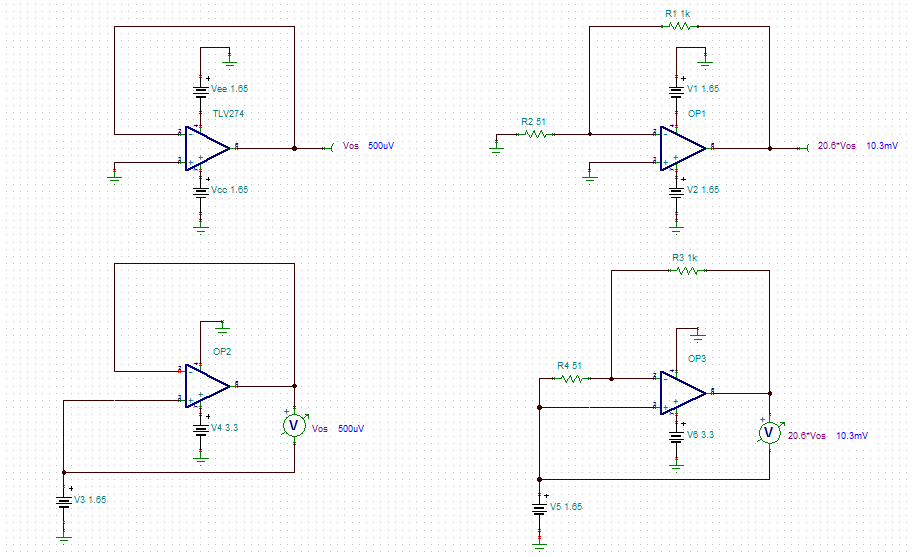Other Parts Discussed in Thread: TLV274
Hello
I want to measure the Input Offset Voltage of the TLV274-Q1.
We constructed the circuit as below to measure Input Offset Voltage.

However, the measured value exceeds the guaranteed range of this product.(7mV max)
The measurement result is about 8 to 9 mV.
Therefore, I would like to inquire whether the measurement method we used is correct.
Please let us know if there is a way we can measure more accurately.


